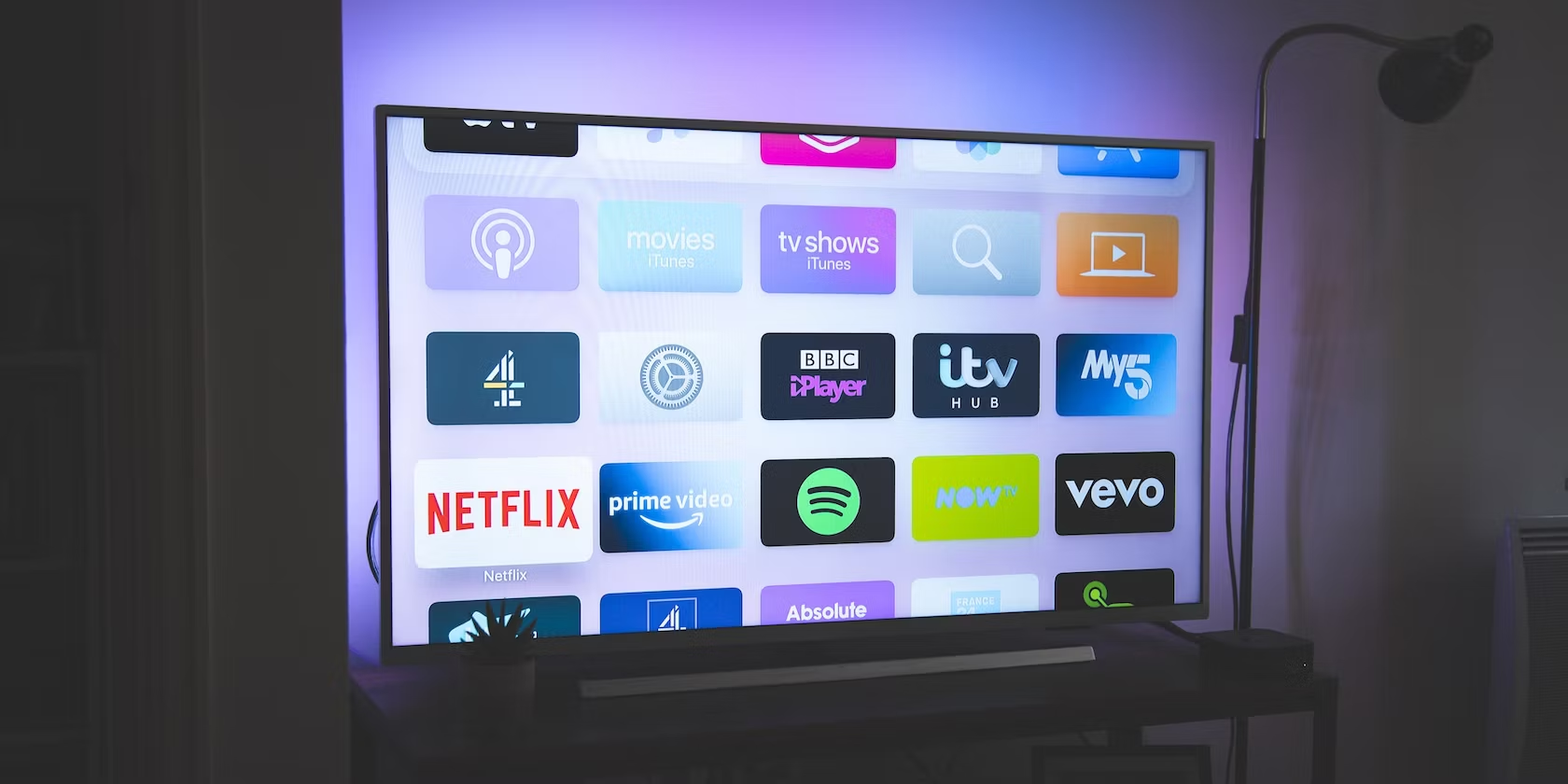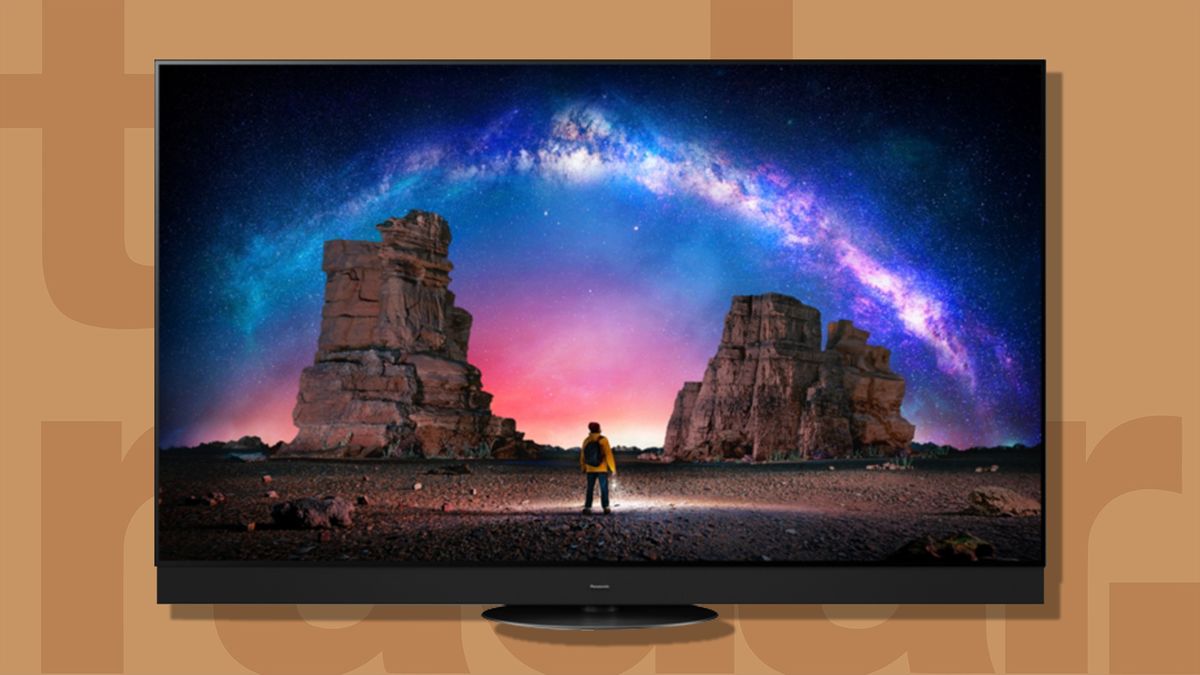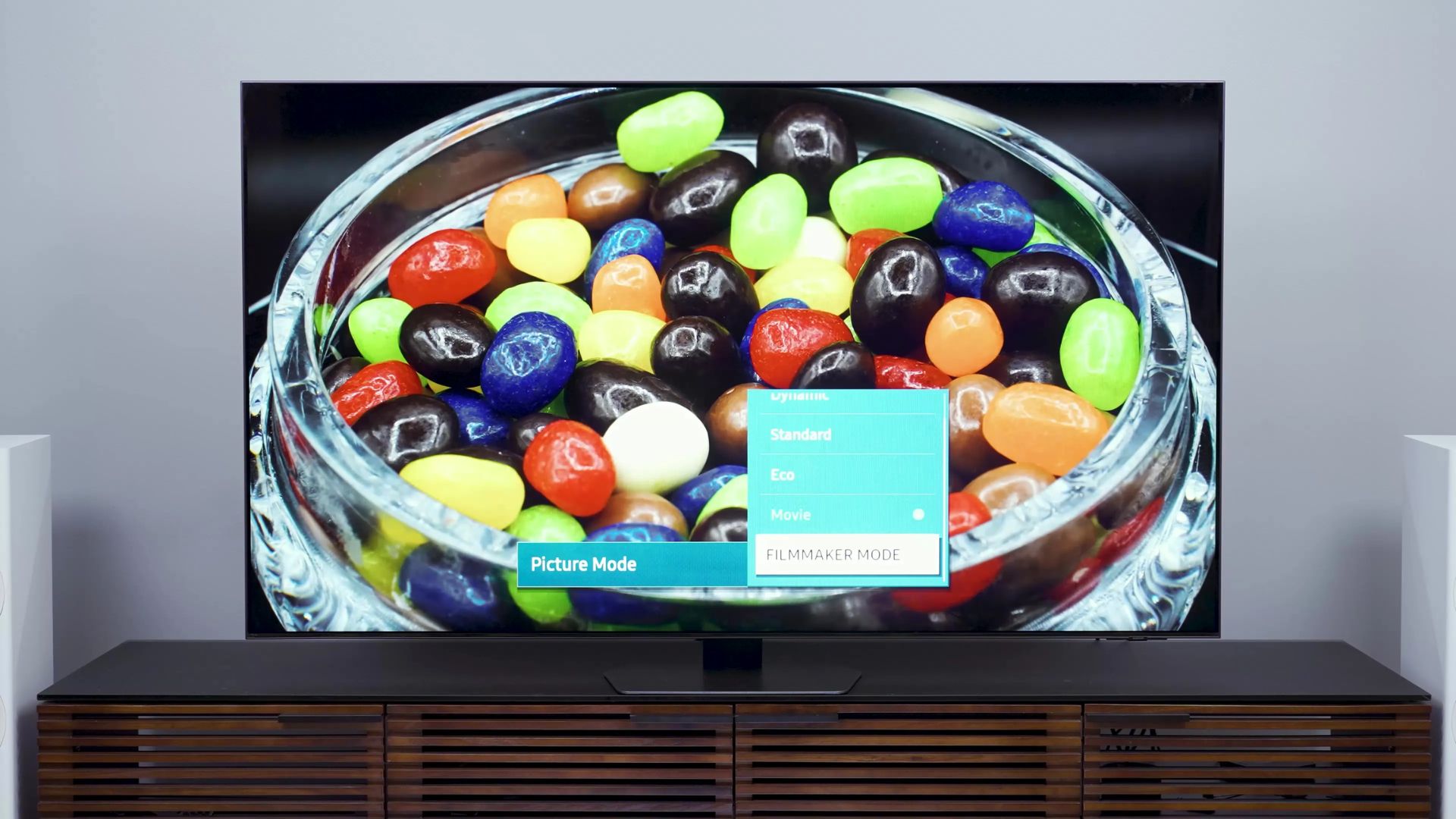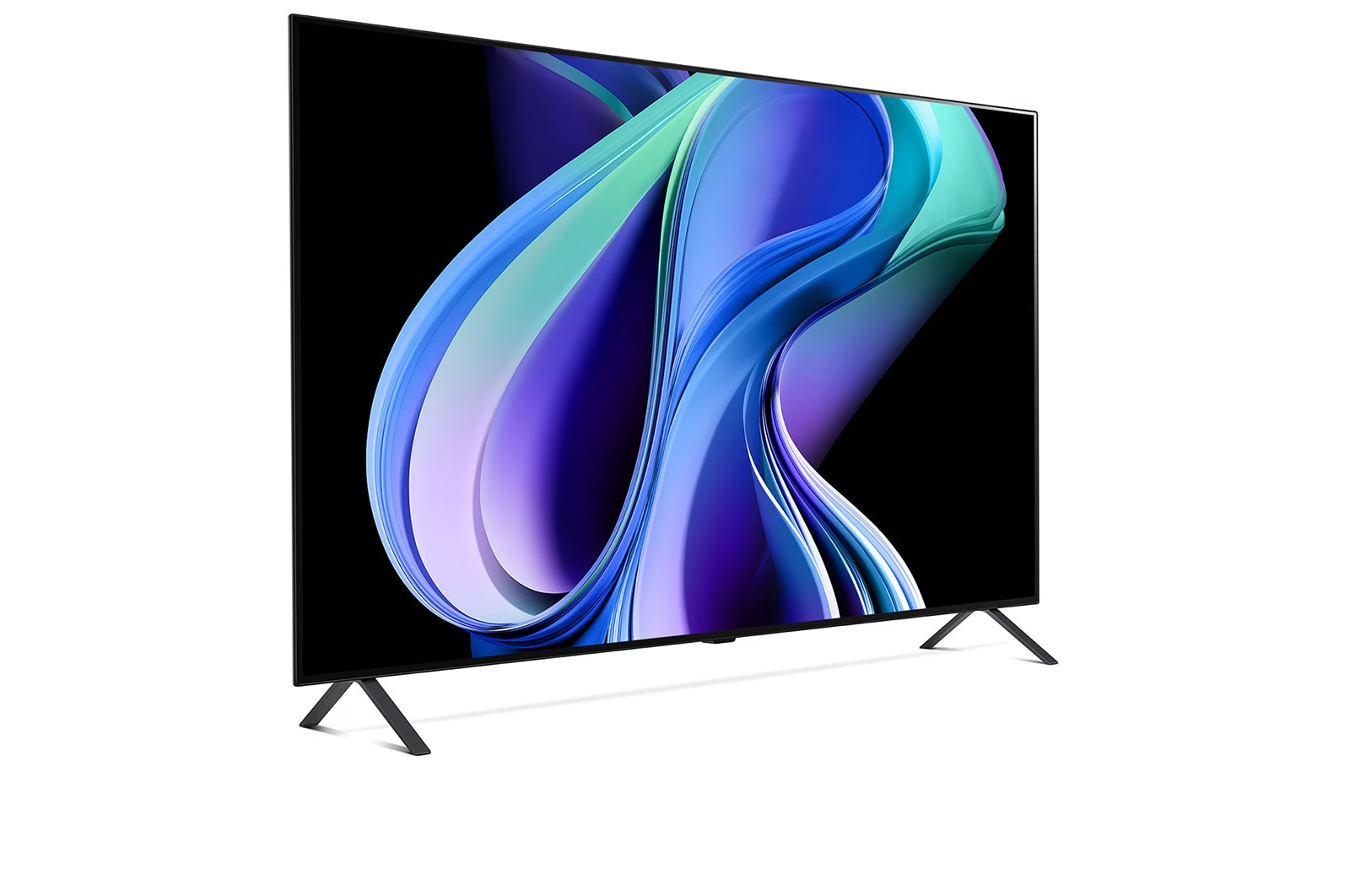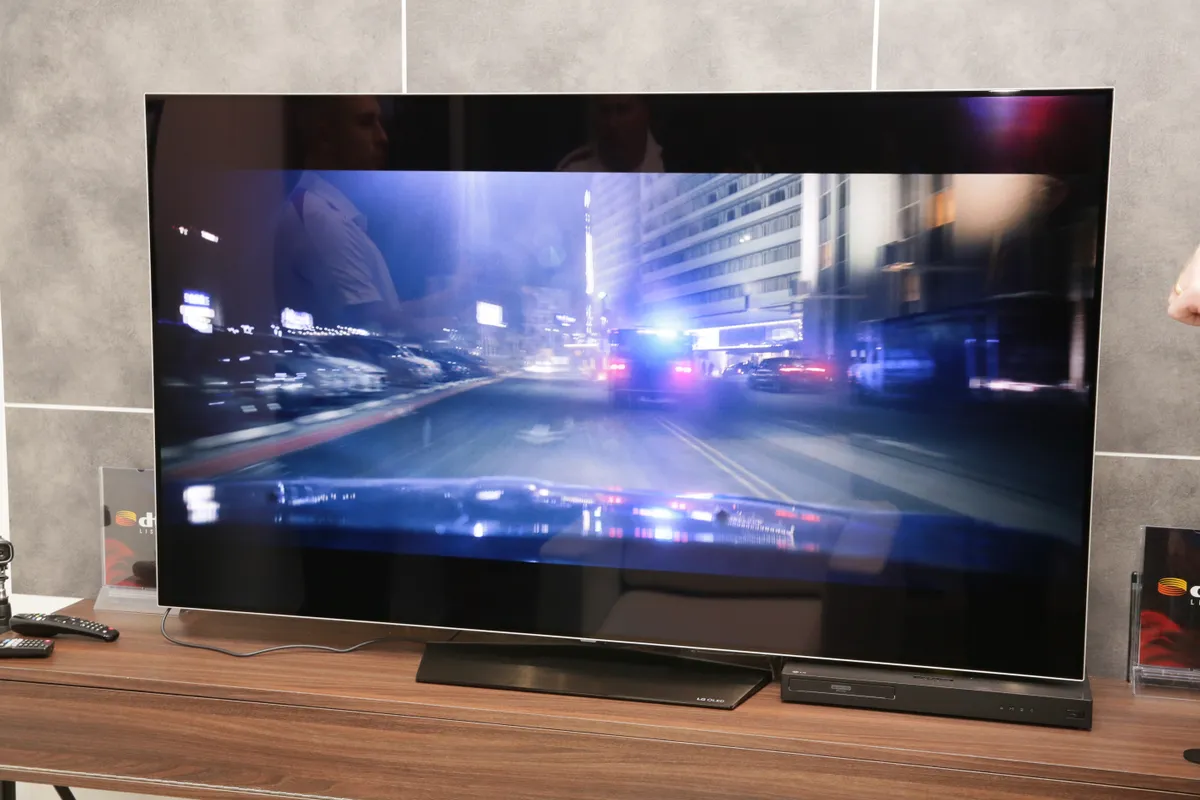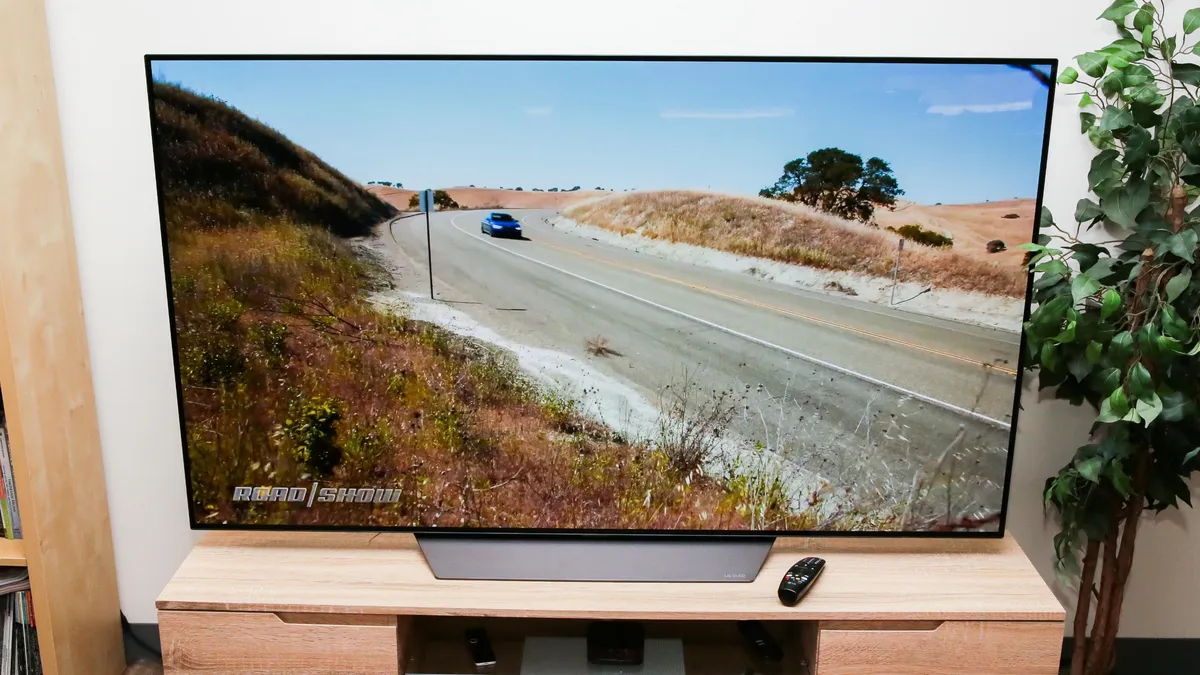Introduction
Welcome to our comprehensive guide on the power consumption of OLED TVs. As energy efficiency becomes a more significant concern for consumers, understanding how much power our electronic devices consume has become essential. In this article, we will dive into the power consumption of OLED TVs and explore factors that can affect their energy usage.
With advancements in display technology, OLED (Organic Light-Emitting Diode) TVs have gained popularity for their impressive picture quality and vibrant colors. However, one question that often arises is how much power these TVs consume. Whether you are looking to buy a new OLED TV or simply curious about its energy efficiency, understanding its power consumption can help you make an informed decision.
Throughout this guide, we will provide you with insights into the average power consumption of OLED TVs, the factors that can affect their energy usage, and whether OLED TVs are considered energy-efficient compared to other types of displays.
Furthermore, we will share valuable tips on how to reduce the power consumption of your OLED TV without compromising your viewing experience. By following these tips, you can minimize your environmental footprint and potentially save on your energy bills.
Whether you are a tech-savvy individual or someone who wants to make eco-friendly choices, this guide will assist you in understanding the power consumption of OLED TVs, its impact on energy usage, and steps you can take to reduce it. So, let’s dive in and explore the fascinating world of OLED TV power consumption!
What is an OLED TV?
An OLED TV, which stands for Organic Light-Emitting Diode Television, is a type of display technology that uses organic compounds to create light and color. Unlike traditional LED or LCD TVs, OLED TVs do not rely on a backlight. Instead, each pixel in an OLED TV produces its own light.
This technology allows OLED TVs to achieve a level of contrast and color accuracy that is unmatched by other display types. With self-emitting pixels, OLED TVs can turn off individual pixels completely, resulting in true black levels and infinite contrast ratios. This enhances the overall picture quality and delivers a more immersive viewing experience.
Another significant advantage of OLED TVs is their wide viewing angles. As each pixel emits its own light, OLED displays maintain consistent color and contrast even when viewed from different angles. This is particularly beneficial when watching TV with a group of people or sitting at an off-center position.
Additionally, due to their pixel-level control and fast response time, OLED TVs excel in displaying fast-moving action and fluid motion. This makes them especially suited for watching sports, gaming, and viewing other content with rapid on-screen motion.
OLED TVs are also known for their slim and sleek designs. Since there is no need for a bulky backlight, manufacturers can create ultra-thin and lightweight TVs that can be mounted on walls or placed on stands with ease.
It is worth noting that OLED technology is not limited to televisions. It is also used in smartphones, tablets, and other portable electronic devices, offering users vibrant and high-quality displays in a more compact form factor.
Now that we have a basic understanding of what OLED TVs are and their advantages, let’s dive into the power consumption aspect of these cutting-edge displays, which will help us make informed decisions when it comes to energy efficiency and reducing our carbon footprint.
Power Consumption of OLED TVs
When it comes to power consumption, OLED TVs are known for their energy efficiency compared to other display technologies. The absence of a backlight means that OLED TVs only consume power based on the brightness of the individual pixels that are active on the screen.
OLED TVs have the ability to turn off pixels completely, resulting in true black levels. In scenes with darker content, where black pixels dominate the screen, OLED TVs consume significantly less power compared to LCD or LED TVs, which require constant backlighting regardless of the content being displayed.
However, it is important to note that OLED TVs still consume power when pixels are active and displaying bright content. The power consumption is directly related to the brightness level of the display. Higher brightness settings will result in increased power consumption, while lower brightness settings will reduce energy usage.
In general, OLED TVs tend to consume less power than traditional LCD or LED TVs, especially when watching content with predominantly dark scenes. This energy efficiency can lead to cost savings in the long run, as you will be paying less for electricity consumption over the life of your TV.
It is worth mentioning that recent advancements in OLED technology have further improved energy efficiency. Manufacturers have introduced features like automatic brightness adjustment and power-saving modes that optimize the power consumption based on the ambient light conditions and user preferences.
Overall, while OLED TVs do consume power, their energy efficiency is superior to other display types, thanks to their ability to turn off individual pixels and achieve true black levels. By understanding the power consumption of these TVs, you can make informed decisions about energy usage and tailor your settings to balance energy efficiency and picture quality.
Next, we will delve into the various factors that can influence the power consumption of OLED TVs and how you can optimize your viewing experience while minimizing energy usage.
Factors Affecting Power Consumption
Several factors can affect the power consumption of OLED TVs. Understanding these factors can help you optimize your energy usage and make informed choices when it comes to your viewing experience. Let’s explore the key factors that influence the power consumption of OLED TVs:
- Brightness settings: The brightness level of your OLED TV has a direct impact on its power consumption. Higher brightness settings will consume more power than lower brightness settings. Adjusting the brightness to a comfortable level that suits your viewing environment can help reduce energy usage.
- Screen content: The content you are watching plays a role in power consumption. OLED TVs consume less power when displaying darker scenes due to their ability to achieve true black levels. Bright and colorful scenes require more power, so optimizing the content you watch and adjusting settings accordingly can help conserve energy.
- Screen size: Generally, larger OLED TVs consume more power than smaller ones, as they have more pixels to illuminate. If energy efficiency is a priority for you, consider choosing a smaller screen size that meets your needs without compromising your viewing experience.
- Smart features and connectivity: Smart TVs often have additional features and connectivity options that can increase power consumption. Features like streaming services, voice control, and Wi-Fi connectivity require power to operate. Minimizing the use of these features when not needed can help conserve energy.
- Settings optimization: Taking advantage of the power-saving settings available on your OLED TV can contribute to reducing power consumption. Options like automatic screen dimming, sleep timers, and energy-saving modes can help optimize energy usage without sacrificing picture quality.
It’s important to note that the impact of these factors on power consumption may vary across different models and brands of OLED TVs. Manufacturers often provide energy-saving features and user manuals that guide users on how to optimize settings for better energy efficiency. Consulting the product documentation or reaching out to the manufacturer’s support can provide additional insights specific to your OLED TV model.
Optimizing these factors according to your preferences and viewing habits can not only help conserve energy but also prolong the lifespan of your OLED TV. By being mindful of these factors, you can enjoy a more energy-efficient viewing experience while minimizing the environmental impact of your device.
Average Power Consumption of OLED TVs
The average power consumption of OLED TVs can vary depending on the model, screen size, settings, and usage patterns. While OLED TVs are generally energy-efficient compared to other display technologies, it is important to understand the typical power consumption of these TVs to make informed decisions regarding energy usage.
On average, smaller OLED TVs, such as those with screen sizes around 55 inches or smaller, consume around 100-150 watts of power during typical usage. Larger OLED TVs, with screen sizes of 65 inches or more, may consume between 150-250 watts of power.
It’s worth noting that these power consumption figures are approximate and can vary significantly from one model to another. Some OLED TVs may have more advanced power-saving features or optimizations that can further reduce power consumption.
Additionally, certain usage patterns can impact power consumption. For example, streaming high-definition content or playing video games with bright graphics may consume more power compared to watching regular TV broadcasts or using the TV for general browsing.
To get a better understanding of the power consumption of a specific OLED TV model, it is advisable to refer to the product specifications provided by the manufacturer. These specifications often include information on the TV’s power consumption in different operating modes, such as standby, active, or sleep modes.
By being mindful of the average power consumption of OLED TVs and considering the specific model’s specifications, you can make informed decisions about energy usage and select a TV that meets your energy efficiency requirements.
Next, let’s explore whether OLED TVs are considered energy-efficient compared to other display technologies.
Is an OLED TV Energy-efficient?
OLED TVs are widely regarded as energy-efficient compared to other display technologies such as LCD or LED TVs. Their unique construction and ability to individually control pixels contribute to their energy efficiency. Here are a few reasons why OLED TVs are considered energy-efficient:
Pixel-level control: Unlike LCD or LED TVs that require a constant backlight, OLED TVs can turn off individual pixels completely. This means that when displaying darker scenes or black content, OLED TVs consume significantly less power since the inactive pixels are not emitting light. The ability to achieve true black levels leads to improved energy efficiency.
Wide viewing angles: OLED TVs maintain consistent picture quality and brightness even when viewed from different angles. This eliminates the need for additional backlighting to compensate for reduced image quality, resulting in more efficient energy usage.
Advanced power-saving features: Nowadays, OLED TVs come with various power-saving features to optimize energy consumption. These features can include automatic brightness adjustment, motion sensors that dim the screen when there is no activity, and energy-saving modes that reduce power usage during standby or idle states.
Overall power consumption: On average, OLED TVs consume less power compared to LCD or LED TVs, especially when watching content with predominantly dark scenes. The absence of a constant backlight significantly reduces power consumption during those moments.
However, it’s essential to note that energy efficiency is not solely determined by the display technology. Factors such as screen size, brightness settings, screen content, and usage patterns can also influence the overall power consumption of an OLED TV.
While OLED TVs are generally energy-efficient, it’s always recommended to research and compare the energy ratings and specifications of different OLED TV models. Energy labels, such as ENERGY STAR certification, can provide additional information about a TV’s energy efficiency and help you make an informed decision.
By taking advantage of the energy-saving features, adjusting brightness settings, and being mindful of your usage patterns, you can maximize the energy efficiency of your OLED TV and reduce your environmental footprint.
In the next section, we will provide some useful tips for reducing power consumption and optimizing your OLED TV’s energy efficiency.
Tips for Reducing Power Consumption
While OLED TVs are already energy-efficient, there are several tips and tricks you can utilize to further reduce power consumption and optimize the energy efficiency of your TV. Implementing these practices can help you save on energy costs and minimize your environmental impact. Here are some helpful tips:
- Adjust brightness settings: Lowering the brightness of your OLED TV can significantly reduce power consumption. Find a comfortable brightness level that suits your viewing environment and preferences. Consider enabling automatic brightness adjustment to optimize energy usage based on ambient lighting conditions.
- Use energy-saving modes: Take advantage of the energy-saving modes or power-saving features available on your OLED TV. These modes automatically optimize settings for energy efficiency, such as lowering backlight intensity or dimming the screen during periods of inactivity.
- Enable sleep timers: Set a sleep timer on your TV to automatically turn off the display after a certain period of inactivity. This prevents unnecessary power consumption if you accidentally leave the TV on when not in use.
- Minimize smart features: Smart features on OLED TVs, such as streaming services or voice control, can consume additional power. Disable or limit the usage of these features when not needed to conserve energy.
- Unplug when not in use: When you’re not using your OLED TV for an extended period, consider unplugging it. This prevents standby power consumption and saves energy. If unplugging is not convenient, consider using a smart power strip that can cut off power to the TV and connected devices when not in use.
- Optimize screen time and content: Minimize excessive screen time and avoid displaying static or bright content for extended periods. Regularly turning off the TV when not actively watching can reduce unnecessary power consumption.
- Keep your TV updated: Regularly update your OLED TV’s firmware to ensure it is running the latest software version. Manufacturers often release updates that include performance optimizations and energy-saving features.
- Consider viewing habits: Assess your viewing habits and adjust your settings accordingly. If you primarily watch content with dark scenes, you can further optimize power consumption by lowering the brightness or utilizing cinema or dark room picture modes.
- Use an energy-efficient viewing mode: Some OLED TVs offer specific viewing modes designed for energy efficiency. These modes reduce power consumption by optimizing various display settings without compromising picture quality.
- Refer to the user manual and manufacturer’s recommendations: Check the user manual or visit the manufacturer’s website for specific recommendations on energy-saving settings and practices for your OLED TV model.
By implementing these tips, you can reduce power consumption and improve the energy efficiency of your OLED TV. Remember, small changes in settings and usage patterns can add up to significant energy savings over time.
Now that you have a better understanding of how to minimize power consumption, let’s wrap up by summarizing the key points discussed in this guide.
Conclusion
In this comprehensive guide, we explored the power consumption of OLED TVs and learned about their energy efficiency compared to other display technologies. OLED TVs stand out for their ability to individually control pixels, resulting in true black levels and lower power consumption during dark scenes. Their wide viewing angles and advanced power-saving features further contribute to their energy-efficient nature.
We discussed the average power consumption of OLED TVs, highlighting that it can vary based on factors such as screen size, brightness settings, content, and usage patterns. By referring to the product specifications and energy labels, you can make informed decisions and select an OLED TV model that meets your energy efficiency requirements.
Furthermore, we provided valuable tips for reducing power consumption and optimizing the energy efficiency of your OLED TV. By adjusting brightness settings, utilizing energy-saving modes, and being mindful of your usage habits, you can minimize power consumption and save on energy costs while enjoying an exceptional viewing experience.
Remember to refer to the user manual and manufacturer’s recommendations for your specific OLED TV model, as they can provide additional insights and customized settings to optimize energy usage.
Overall, OLED TVs offer impressive picture quality while being energy-efficient. By understanding their power consumption, implementing energy-saving practices, and making conscious decisions, you can enjoy your OLED TV while minimizing your environmental impact.
We hope this guide has been informative and helpful in your journey to better understand the power consumption and energy efficiency of OLED TVs.







